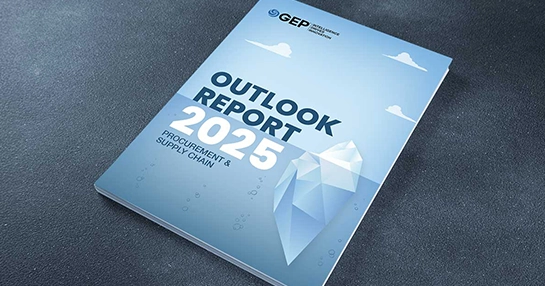
Framework Agreements in Procurement: A Quiet but Powerful Advantage
- Save time and cut errors with pre-agreed terms instead of repeating sourcing cycles.
- Gain stability through predictable supply lines and service levels.
- Use technology to monitor performance, ensure compliance, and act on risks quickly.
October 30, 2025 | Procurement Strategy 4 minutes read
If you have spent enough time in procurement, you will know the frustration of running the same sourcing cycle repeatedly. The process is familiar: a new RFP, identical bids from the same suppliers, the same winner every time, yet weeks vanish into paperwork, meetings, and sign-offs.
A framework agreement offers a way to quietly break that loop. There is nothing ostentatious about it, yet for procurement leaders in manufacturing, healthcare, technology, logistics, and other sectors, it often becomes a stable, time-saving foundation.
When supported by capable procurement software, these agreements can be handled with far greater agility, transparency, and control than traditional manual approaches.
What is a Framework Agreement in Procurement?
If you’ve worked in procurement long enough, you’ve probably come across the term framework agreement. It’s one of those concepts that everyone nods along to in meetings — but in practice, it can mean different things depending on your sector, supplier base, or buying strategy. At its core, a framework agreement is simply an umbrella contract. It sets out the general terms, pricing structures, and conditions under which future purchases (often called “call-offs”) will be made over a set period of time.
Think of it as putting the scaffolding in place so you’re not starting from scratch every time you need to source the same category of goods or services.
Ready to optimise your procurement process?
Let us help you set up and manage framework agreements that deliver lasting value.
Understanding the Role of Framework Agreements in the Procurement Process
Framework agreements are about efficiency and risk management. Instead of running a full tender every time you need laptops, lab supplies, or consultancy services, you do the heavy lifting once — competitive sourcing, supplier due diligence, negotiation — and then rely on that pre-agreed structure for repeat requirements.
For the business, this means:
Speed to buy
Procurement teams and stakeholders can bypass lengthy RFP cycles.
Better pricing consistency
Because terms are locked in, you avoid price drift across multiple transactions.
Supplier performance leverage
With preferred suppliers prequalified, performance monitoring and relationship management are easier to centralize.
Regulatory compliance
Especially in public procurement, frameworks ensure processes meet legal standards.
At the same time, frameworks aren’t about locking yourself into one supplier forever. They’re designed to give flexibility while still operating within an agreed boundary.
How Framework Agreements Work
The Core Structure
A framework agreement usually involves three main elements:
1. The buying organization (or consortium) setting the rules.
2. A panel of pre-qualified suppliers who’ve agreed to the commercial terms.
3. The contract duration, typically running between 2 to 4 years.
The framework itself doesn’t commit you to buying anything. Instead, it creates a mechanism for calling off specific contracts under those pre-agreed terms.
Pre-qualification and Supplier Onboarding
Getting onto a framework is often competitive. Suppliers have to demonstrate capability, financial standing, compliance, and capacity. For procurement teams, this frontloads the vetting process. Once suppliers are on board, every future call-off benefits from that upfront diligence — you’re buying from a pool of trusted partners.
Ready to put agentic AI to work in your procurement function?
Download The Agentic AI Playbook for Procurement Pros to see how leading organisations are moving from automation to true autonomy.
Call-off Contracts
Here’s where the real activity happens. A call-off (or “mini-competition”) is the individual contract you issue to a supplier under the framework. It could be as simple as raising a purchase order or as detailed as running a secondary competition among the panel. The framework ensures the rules of engagement, pricing models, and legal protections are already in place — which means every call-off can move quickly without reinventing the
Choosing Between Single and Multi-Supplier
A single-supplier framework is ideal when dealing with highly specialised or proprietary needs.
Multi-supplier models suit more standardised categories where competition can be maintained. These allow quick mini-competitions between approved vendors while staying within compliant sourcing processes.
Both models can be managed effectively with digital contract and supplier management platforms that track performance side-by-side.
How the Framework Agreement Procurement Method Benefits Suppliers and Buyers
| Beneficiary | Benefit | Description |
|---|---|---|
| Buyers | Efficiency | Reduces the time spent on procurement by pre-establishing terms. |
| Cost Savings | Potential for better pricing through bulk agreements. | |
| Consistency | Ensures uniform quality and delivery standards. | |
| Suppliers | Predictable Revenue | Secures a steady stream of business over the agreement's duration. |
| Long-Term Relationships | Fosters ongoing partnerships with buyers. | |
| Reduced Administrative Burden | Minimizes the need for repetitive bidding processes. |
Best Practices for Implementing Effective Framework Agreement Procurement
To maximize the benefits of framework agreements, consider the following best practices:
- Set Clear Terms and KPIs: Define expectations and performance indicators upfront to ensure alignment.
- Conduct Supplier Performance Reviews: Regularly assess supplier performance to maintain high standards.
- Leverage AI and Automation: Utilize technology to streamline supplier selection and monitoring processes.
Conclusion
Framework agreements are a strategic tool in procurement, offering benefits like efficiency, cost savings, and long-term supplier relationships. By understanding their structure and implementing best practices, organizations can harness their full potential, leading to more effective and streamlined procurement processes.



